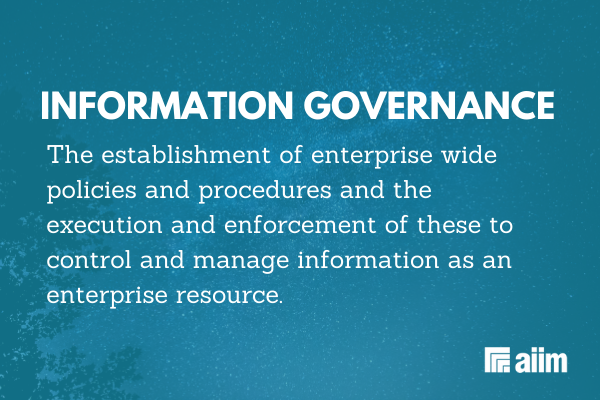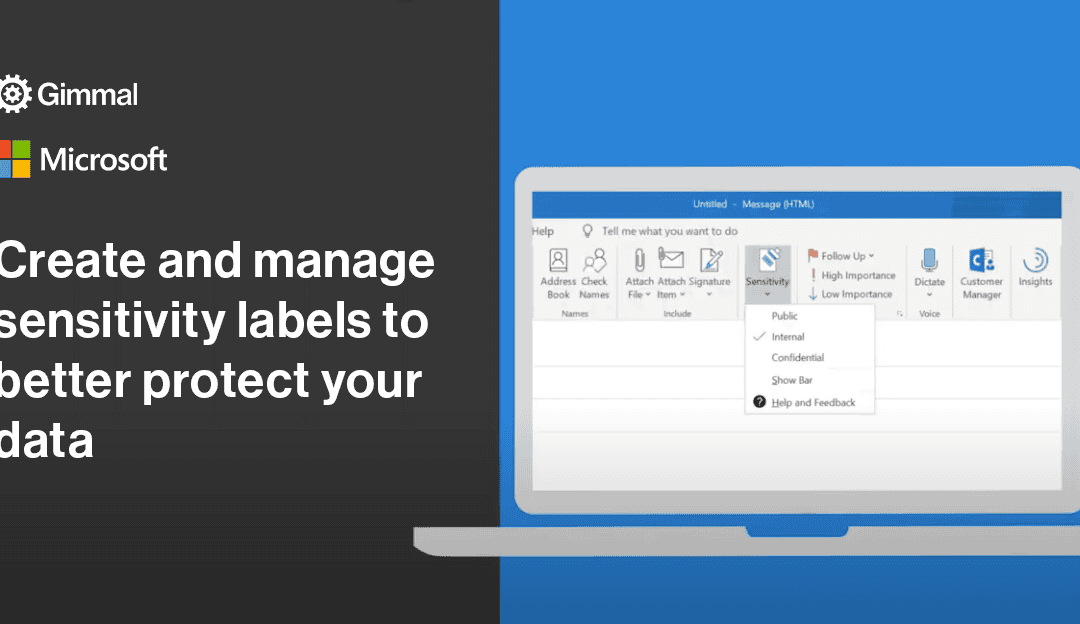Information Governance vs. Information Security — What’s the Difference?

Written by Gimmal Product Marketing
Information is the backbone of modern organizations. Yet, managing and protecting it requires clarity about overlapping but distinct disciplines: information governance and information security. These terms are often used interchangeably, but they represent different areas of focus and responsibility. Let’s break down the relationship between the two and explore how organizations can approach each strategically.
What Is Information Governance?
Information governance (IG) provides the structure and oversight needed to manage an organization’s information assets responsibly and effectively. It covers policies, processes, and frameworks that ensure information is handled in a way that supports operational goals, regulatory compliance, and risk management.
Key Objectives of Information Governance
- Regulatory Compliance: Ensuring all information meets industry regulations, legal standards, and internal policies.
- Risk Mitigation: Reducing exposure to risks such as fines, lawsuits, or reputational damage by managing information responsibly.
- Lifecycle Management: Applying consistent practices for managing information from its creation to its retention or secure disposal.
- Maximizing Value: Organizing and using information to support decision-making and innovation.
- Operational Efficiency: Streamlining the way information is stored, accessed, and shared to reduce overhead and improve productivity.
Unlike practices that focus solely on data or security, IG takes a holistic view. It spans email records, physical documents, digital files, and multimedia, ensuring they’re managed consistently across all formats and departments.

What Is Information Security?
Information security (InfoSec), by contrast, focuses on safeguarding information from threats like unauthorized access, theft, or breaches. It’s about protecting the confidentiality, integrity, and availability of information through technical measures, policies, and monitoring.
Key Objectives of Information Security
- Confidentiality: Ensuring sensitive information is accessible only to authorized users.
- Integrity: Preventing unauthorized changes to data and maintaining its accuracy.
- Availability: Making sure key systems and information are accessible when needed.
- Threat Mitigation: Proactively identifying and addressing vulnerabilities to prevent incidents like data breaches.
- Incident Response: Rapidly responding to and recovering from security events.
InfoSec is narrower in scope than IG, focusing specifically on protecting digital and physical information from internal and external threats. It’s often led by IT and cybersecurity teams, who implement tools like firewalls, encryption, and user access controls.
How Are Information Governance and Information Security Different?
Scope:
-
- Information Governance: Focuses on managing all information assets, regardless of format (digital, physical, multimedia, etc.).
- Information Security: Protects information from threats like unauthorized access or breaches.
Focus:
-
- Information Governance: Strategic, aligning information with organizational goals and compliance requirements.
- Information Security: Tactical, ensuring the confidentiality, integrity, and availability of information.
Stakeholders:
-
- Information Governance: Involves cross-functional teams, including legal, compliance, IT, and operational departments.
- Information Security: Primarily managed by IT and cybersecurity specialists.
Lifecycle:
-
- Information Governance: Addresses the full lifecycle of information, from creation to retention and disposal.
- Information Security: Concentrates on protecting information during its storage, transfer, and use.
Primary Goal:
-
- Information Governance: Ensures responsible management of information and maximizes its value to the organization.
- Information Security: Prevents unauthorized access, data breaches, and other threats.
Why They Must Work Together
Although distinct, information governance and security are interconnected. Governance establishes the rules for how information should be handled—security enforces those rules. Without governance, security efforts may lack direction, and without security, governance initiatives are vulnerable to breaches or misuse.
Examples of Collaboration
- Retention Policies: Governance defines how long sensitive records should be kept; security ensures those records are protected during their retention period.
- Data Classification: Governance establishes categories for sensitive and non-sensitive information; security applies appropriate access controls and protections.
- Incident Response: Governance frameworks outline response protocols, while security teams execute them during a breach.
How to Build a Unified Approach
To effectively manage information and mitigate risks, organizations need both governance and security. Here are some practical steps to align the two:
- Define Clear Ownership
Assign roles for both governance and security. Governance typically involves cross-departmental leadership, while security is managed by IT and cybersecurity teams. - Develop Integrated Policies
Policies should address both disciplines. For example, retention schedules should align with encryption and access controls. - Invest in the Right Tools
Technology is essential for both governance and security. Tools like content management systems, data loss prevention (DLP) software, and secure file-sharing platforms should work together to provide seamless oversight and protection. - Educate Employees
Governance and security efforts are only as good as the people implementing them. Build awareness among employees about handling sensitive information securely while adhering to established policies. - Monitor and Adjust
Regular audits and reviews are key to identifying gaps or weaknesses in governance and security programs. Use metrics to demonstrate progress and refine strategies over time.
Conclusion
Information governance and information security are not interchangeable, but they are complementary. Governance provides the framework for how information is managed, while security ensures that framework is enforced and information is protected. Together, these disciplines help organizations reduce risk, ensure compliance, and unlock the full potential of their information assets.
Organizations that approach governance and security as interconnected efforts position themselves to handle both present and emerging challenges effectively. By fostering collaboration between governance and security teams, companies can build a foundation of trust, resilience, and innovation—essential for long-term success.
Ready to Get Started?
From information lifecycle management to secure disposal and risk mitigation, Gimmal provides the tools and expertise to help organizations govern their information with confidence.
Ready To Speak With Us?
Get started by filling out the form below, and let us help you leverage your existing infrastructure with minimal disruption. Whether you’re looking for ease of use, a single platform solution, or guidance on information governance, we’re here to assist.
Related Content

Podcasts
Podcasts Expert Interviews and Best Practices for Modern Information Governance 23 SEPT Navigating AI and Information Governance Part II – Insights from Gimmal & Office Labs Jason Coggins (Gimmal, UK & Europe) and Mike Nicholas (Office Labs) sit down for a...
Gimmal and Morae: A Game-Changing Partnership in Information Governance
Gimmal and Morae: A Game-Changing Partnership in Information Governance Aug 20, 2025 The information governance (InfoGov) landscape is evolving at a rapid pace, and the recent acquisition of Gimmal by Morae marks a pivotal moment for our industry. In a recent episode...
Navigating AI and Information Governance – Insights from Gimmal & OfficeLabs
Navigating AI and Information Governance – Insights from Gimmal & OfficeLabs Jul 8, 2025 In a recent episode of the Gimmal Podcast, Jason Coggins (Gimmal, UK & Europe) and Graham Bidwell (OfficeLabs) sat down for a deep dive into the fast-evolving worlds of...
Stop Hoarding: Data Retention & Deletion Imperatives for Risk Mitigation
Stop Hoarding: Data Retention & Deletion Imperatives for Risk Mitigation Jun 11, 2025 At Gimmal, our mission is to help organizations effectively manage information, reduce risk, and ensure compliance in an ever-evolving regulatory landscape. In a recent webinar,...

Gimmal Extends Microsoft Purview Information Protection Solution for Enhanced Sensitive Data Labeling and Governance
Thursday, June 20, 2024 – HOUSTON, TX – Gimmal, the market’s only end-to-end information governance platform, announced today the launch of their Microsoft Purview Sensitivity Labels solution to extend and enhance sensitive data classification for unstructured...
